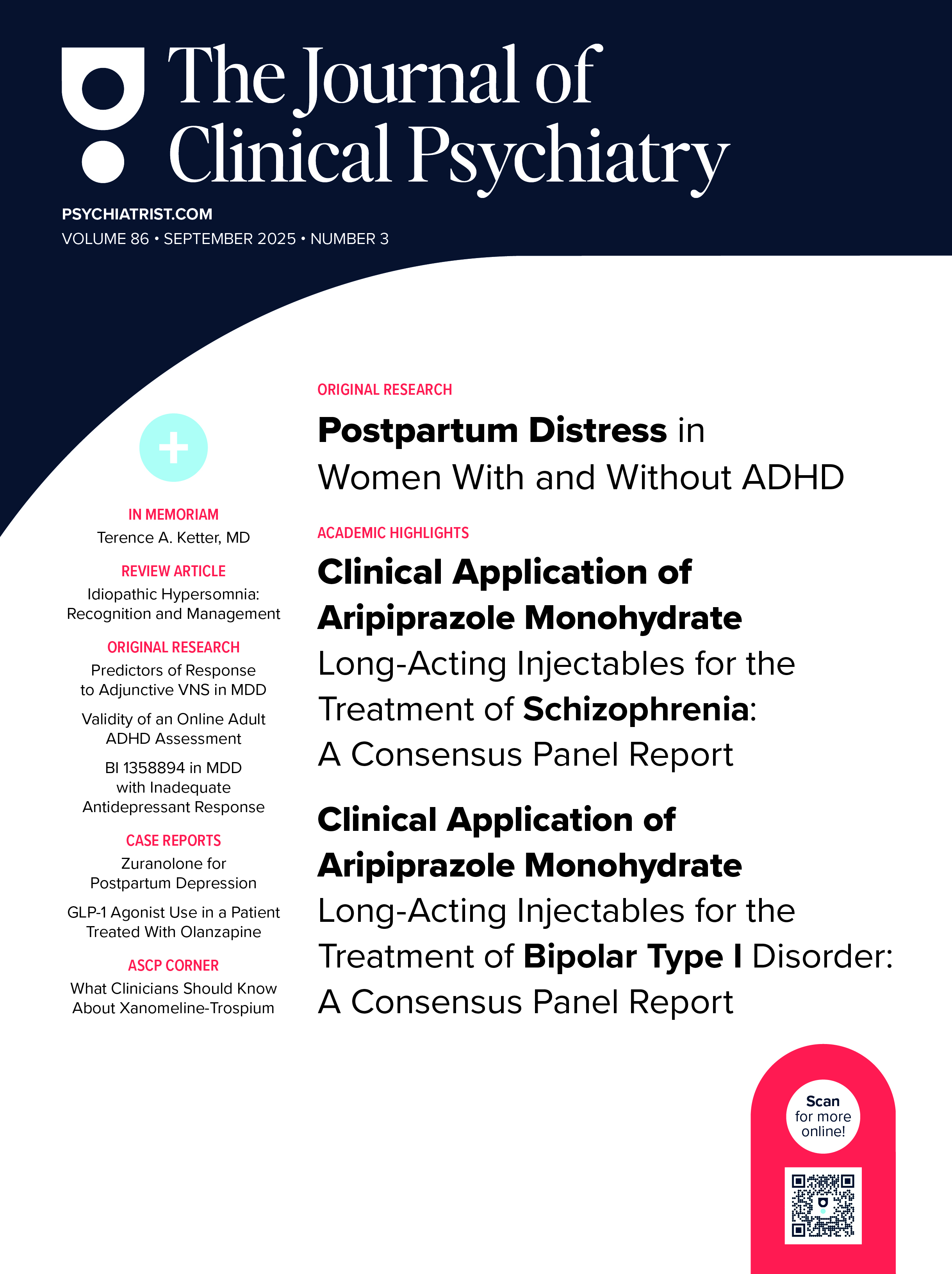Find more articles on this and other psychiatry and CNS topics:
The Journal of Clinical Psychiatry
The Primary Care Companion for CNS Disorders
Background: The use of electroconvulsive therapy(ECT) in the state hospital setting currently represents a verysmall percentage of the total overall use of this modality in thetreatment of the mentally ill.
Method: Using records kept by a state hospital,we retrospectively identified all patients who had received ECTbetween the years 1986 and 1995. A review of the records at thestate hospital from where patients were referred and theuniversity hospital where ECT was administered was undertaken.Demographic and clinical characteristics, reasons for referral,symptom profile, ECT parameters, clinical outcomes, andrestraint/seclusion data were assessed.
Results: Over 10 years, 21 patients were treatedwith ECT, representing 0.4% of all admissions to the statehospital. Of these subjects, 17 records could be retrieved. Themajority were women (N = 12; 71%) and were diagnosed with a mooddisorder. Ten subjects (59%) were over the age of 60 years, 4 ofwhom were 70 years or older. Most patients had a state hospitallength of stay of 1 year or less. The mean number of ECTtreatments was 12.2. There were no medical complications that ledto premature termination of ECT. Eleven patients (65%) weredischarged either directly from the university hospital or within10 days of readmission to the state hospital. Six of 7 patientswho had restraint and seclusion episodes prior to ECT were foundto have no further episodes afterwards. The seventh experienced adramatic decrease in number and total hours of episodes.
Conclusion: For a substantial minority ofpatients in this state hospital setting, ECT appears to have beenan effective and safe form of treatment, and its use should beconsidered early rather than late in the course ofhospitalization.
Members Only Content
This full article is available exclusively to Professional tier members. Subscribe now to unlock the HTML version and gain unlimited access to our entire library plus all PDFs. If you’re already a subscriber, please log in below to continue reading.
Please sign in or purchase this PDF for $40.00.
Already a member? Login




